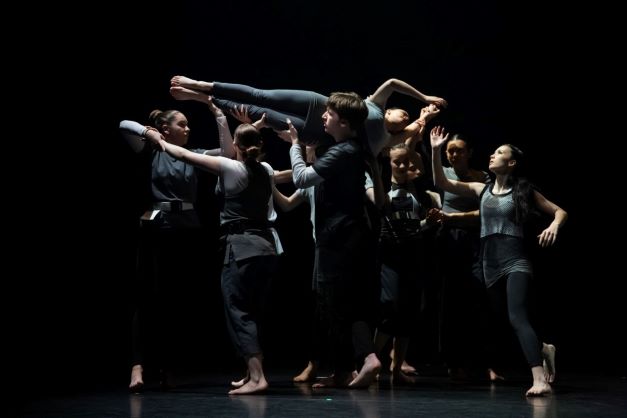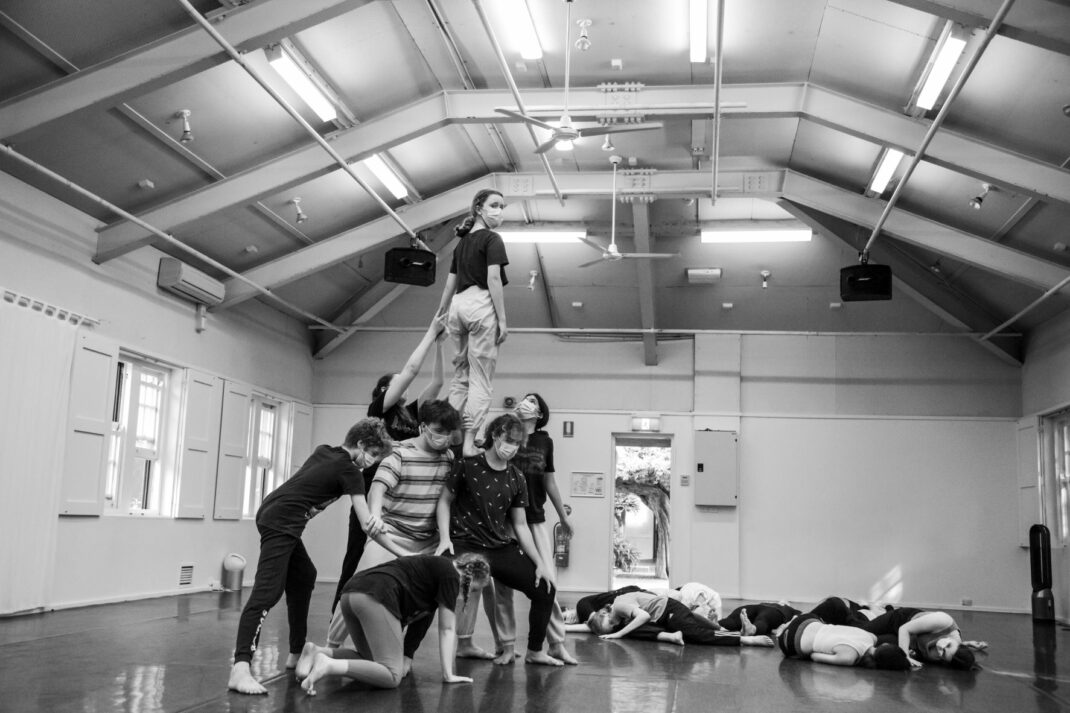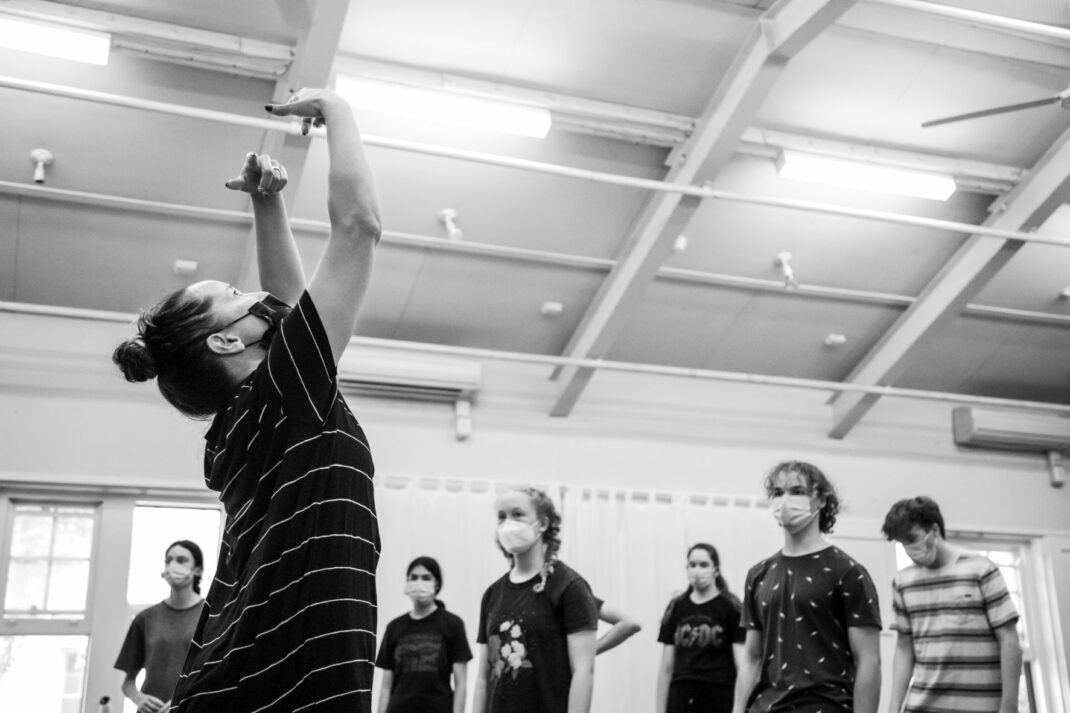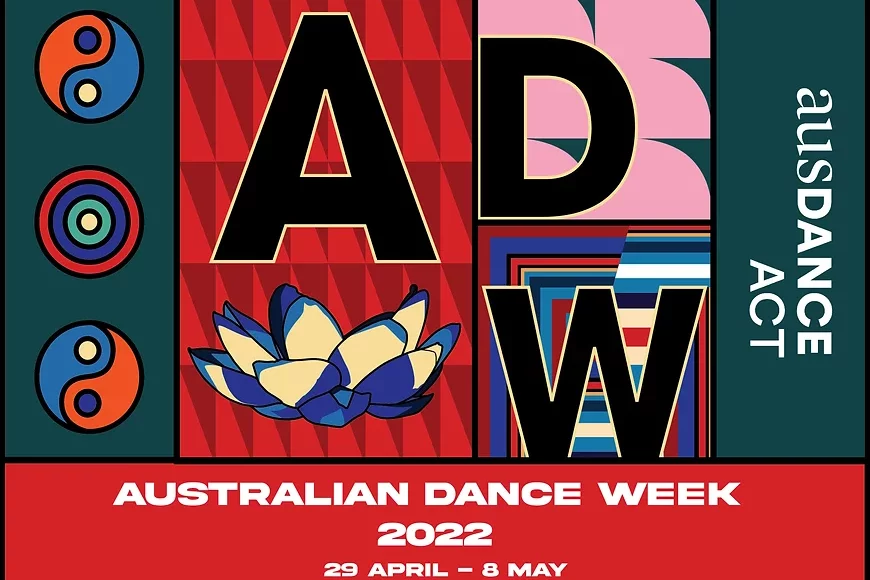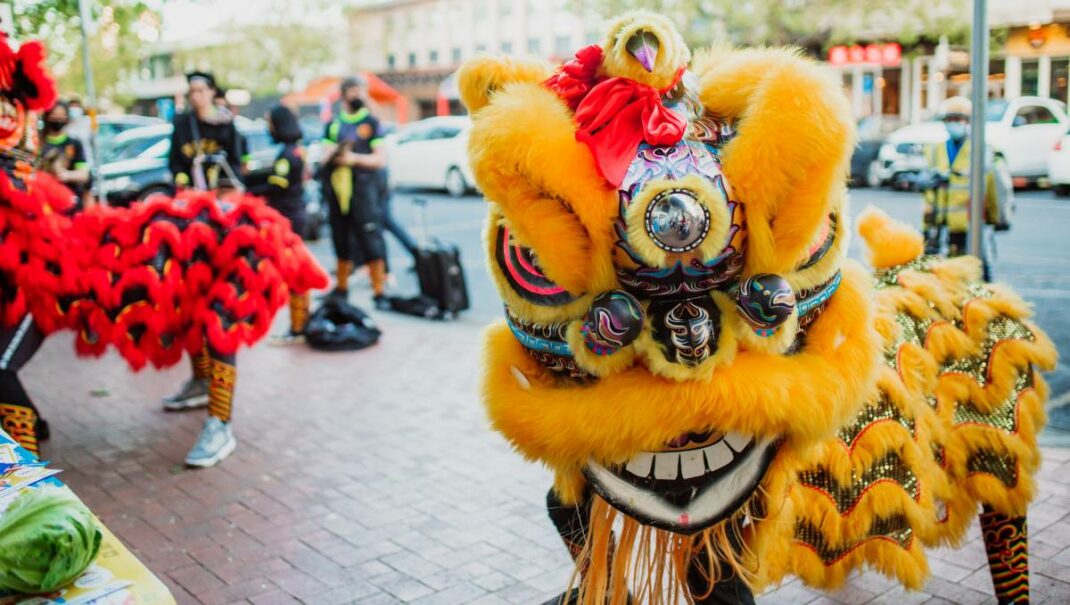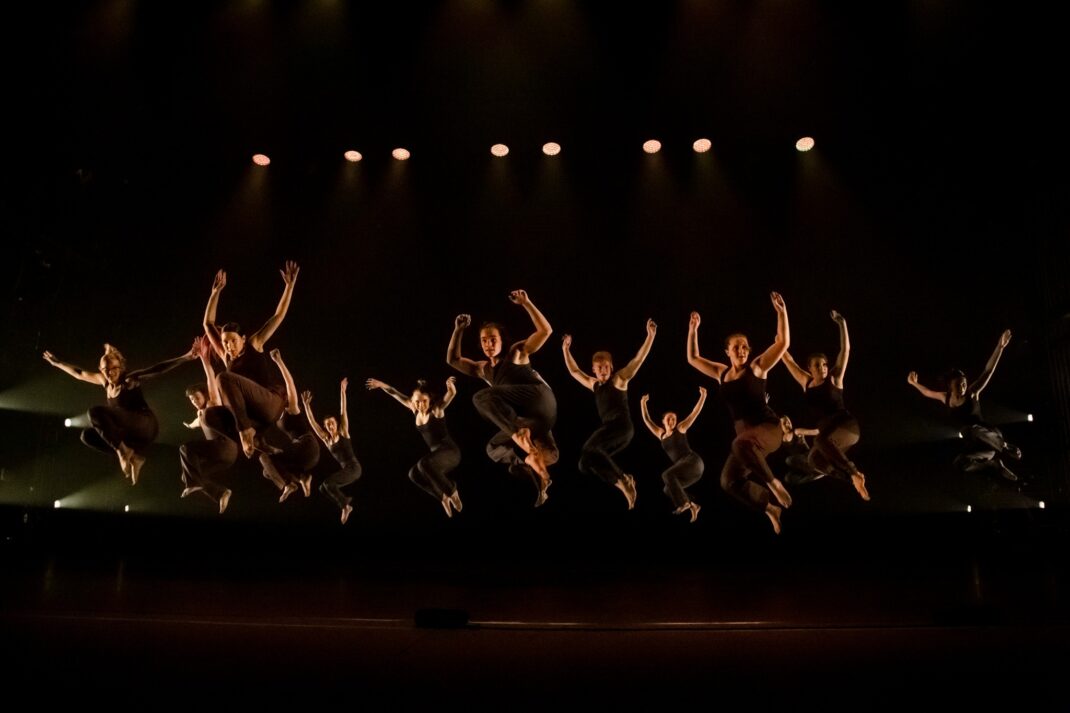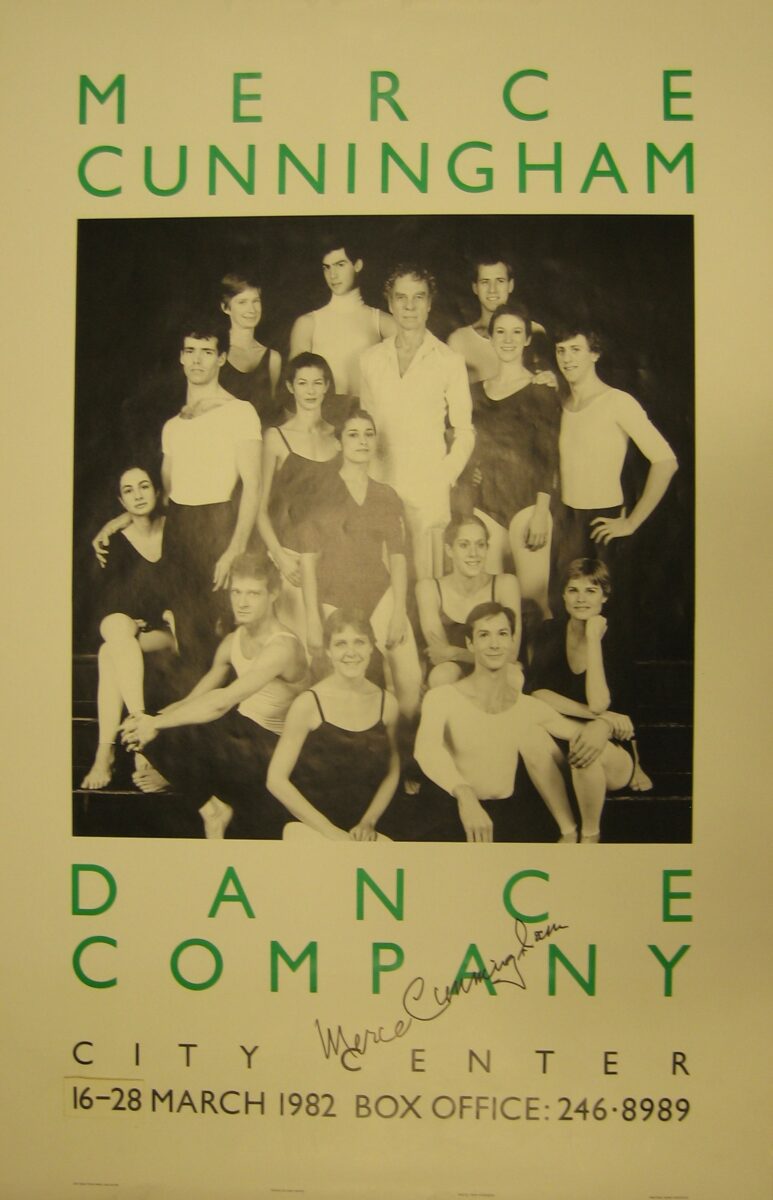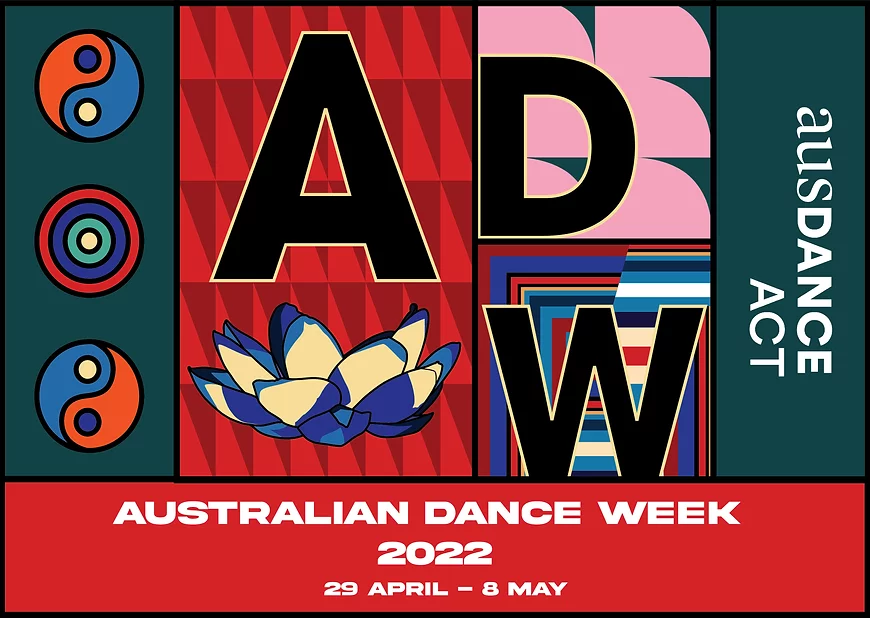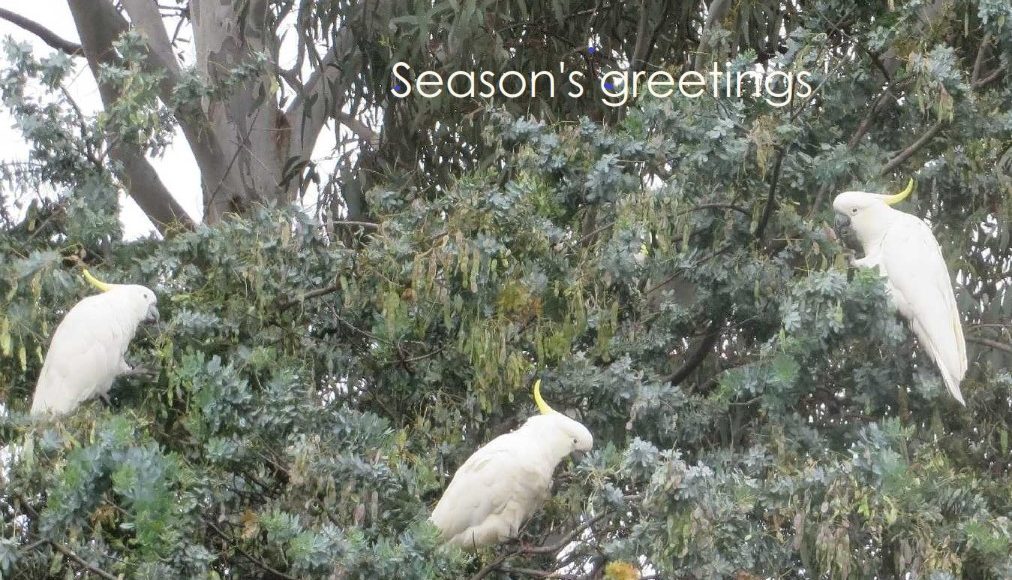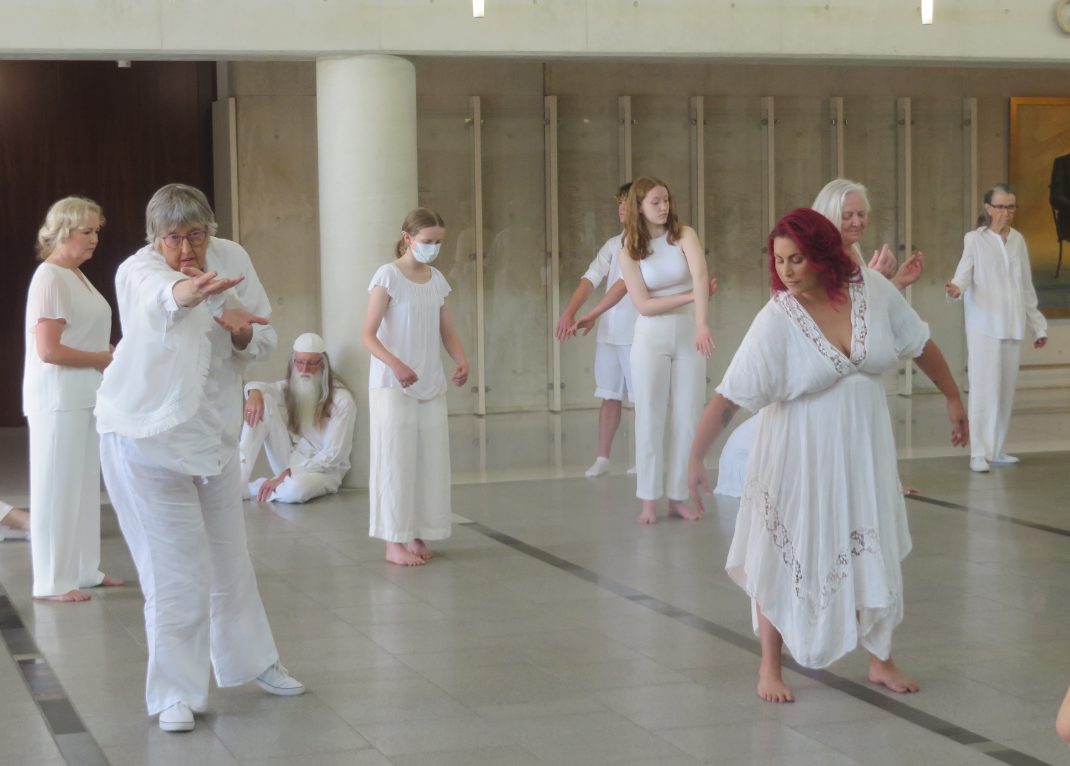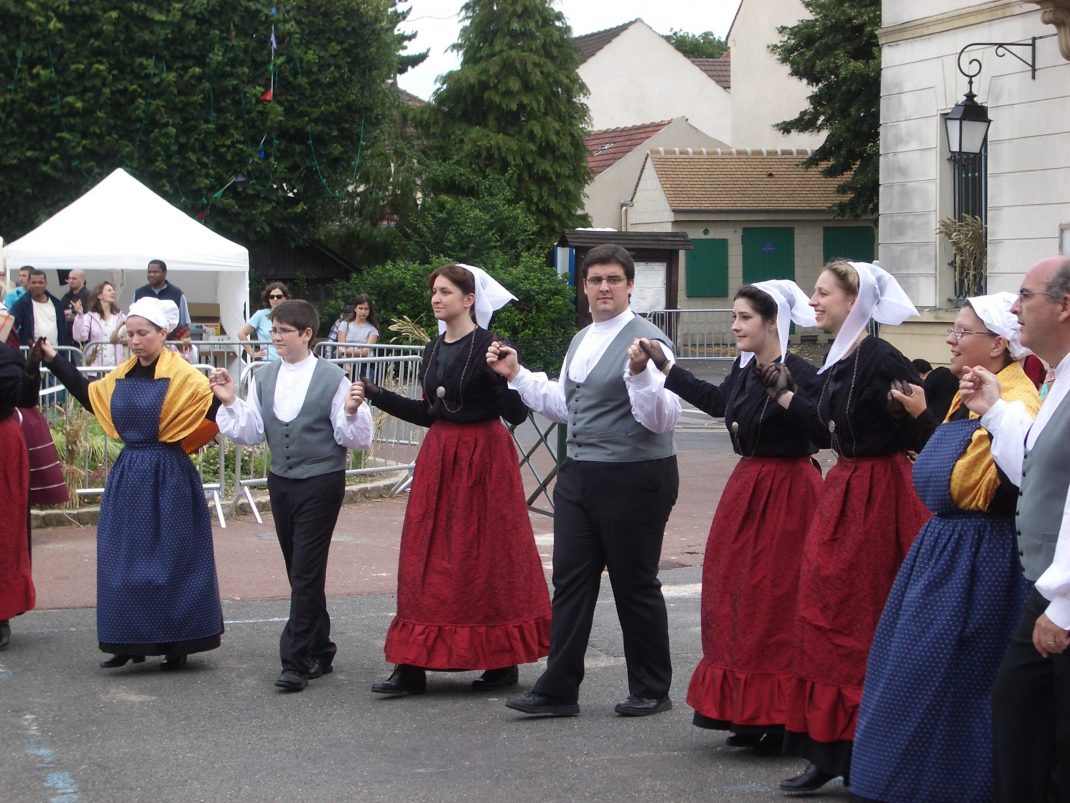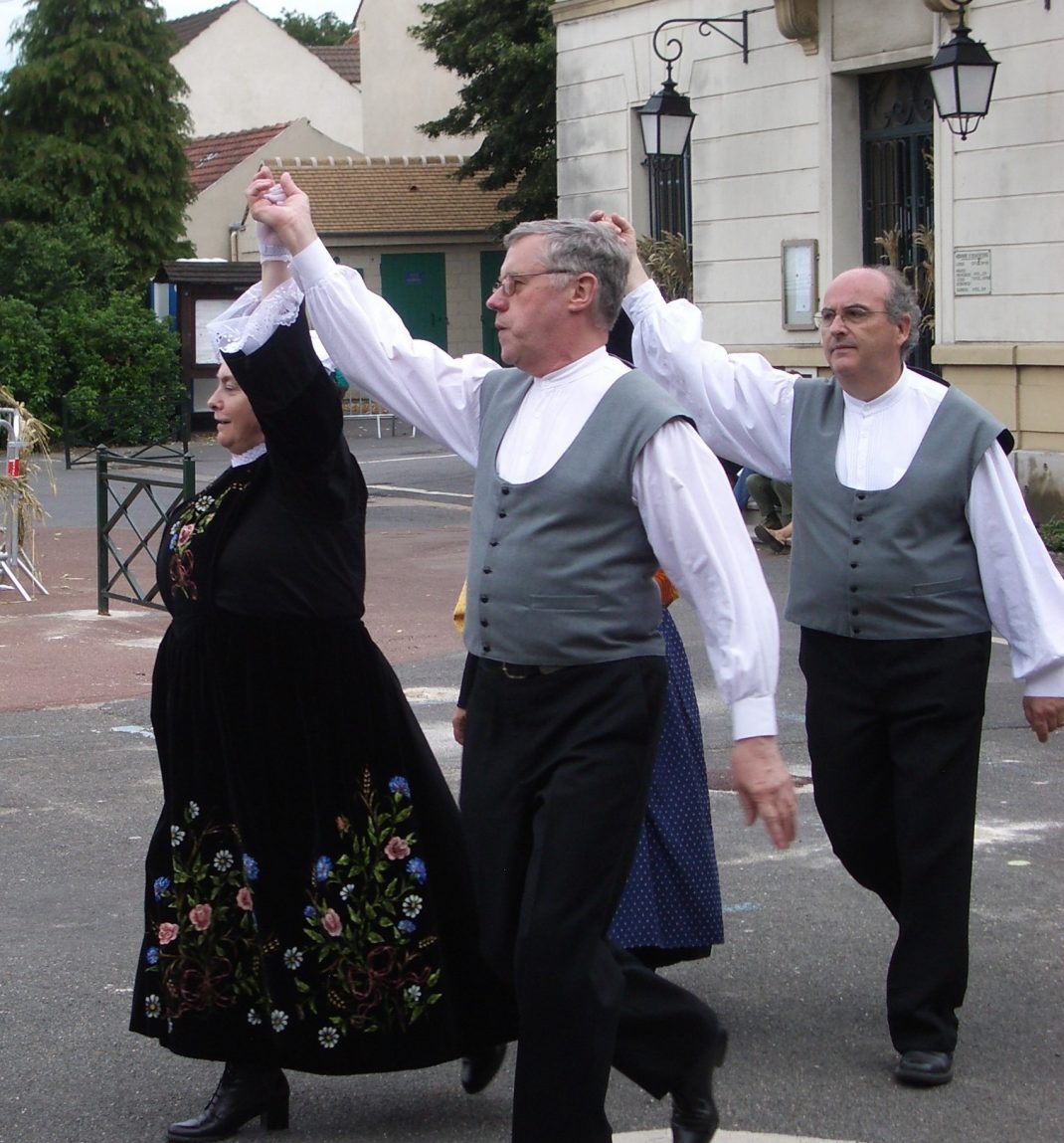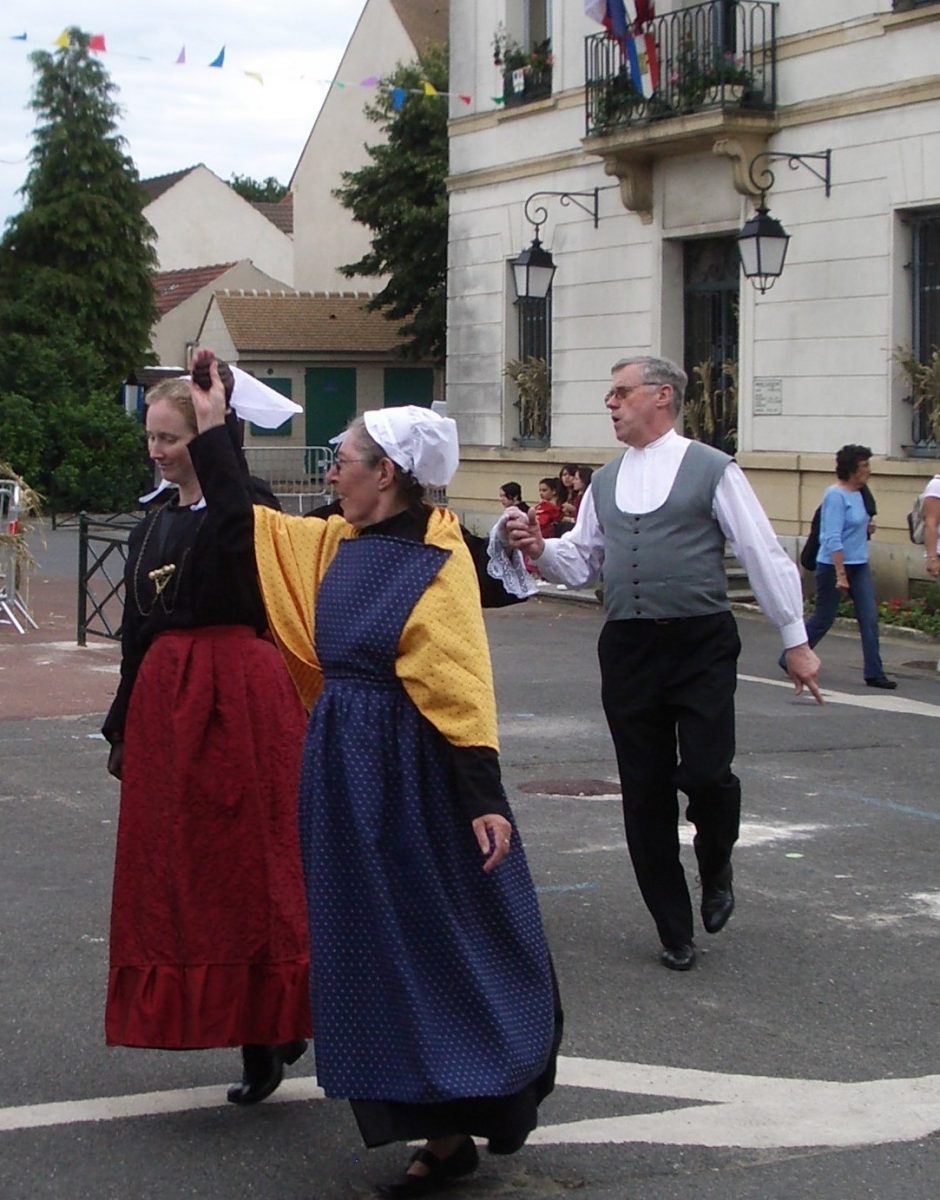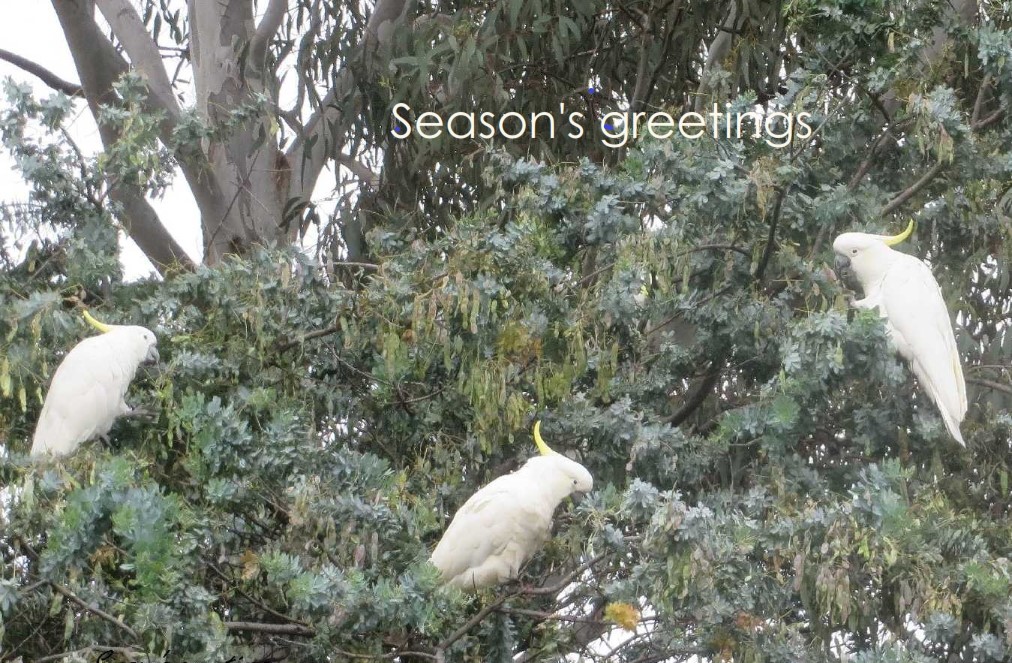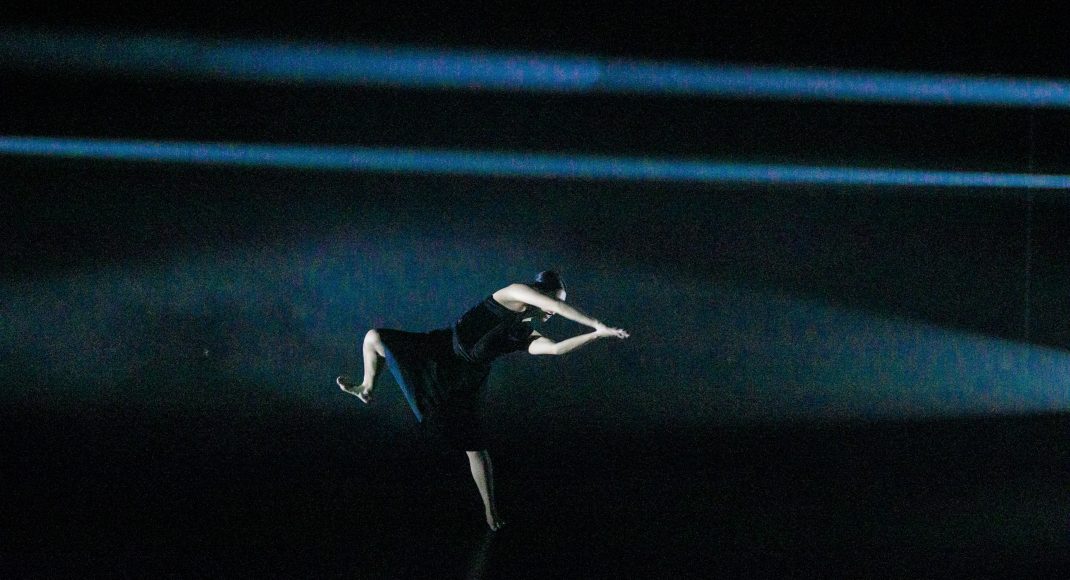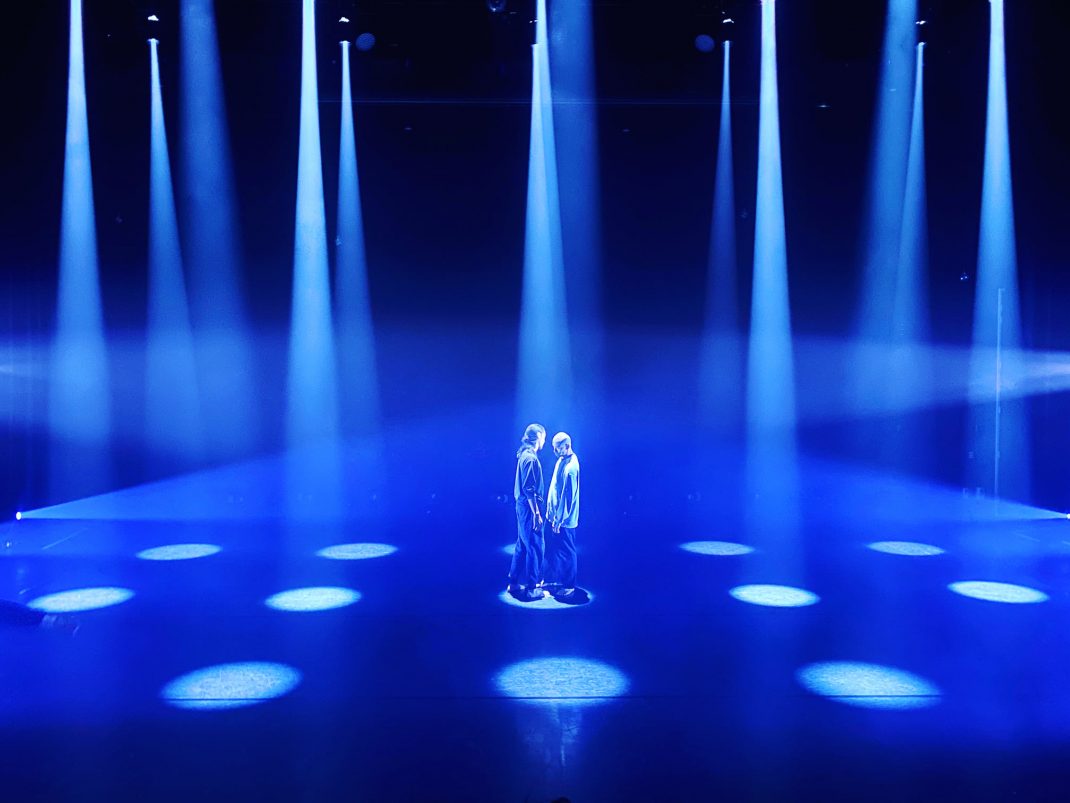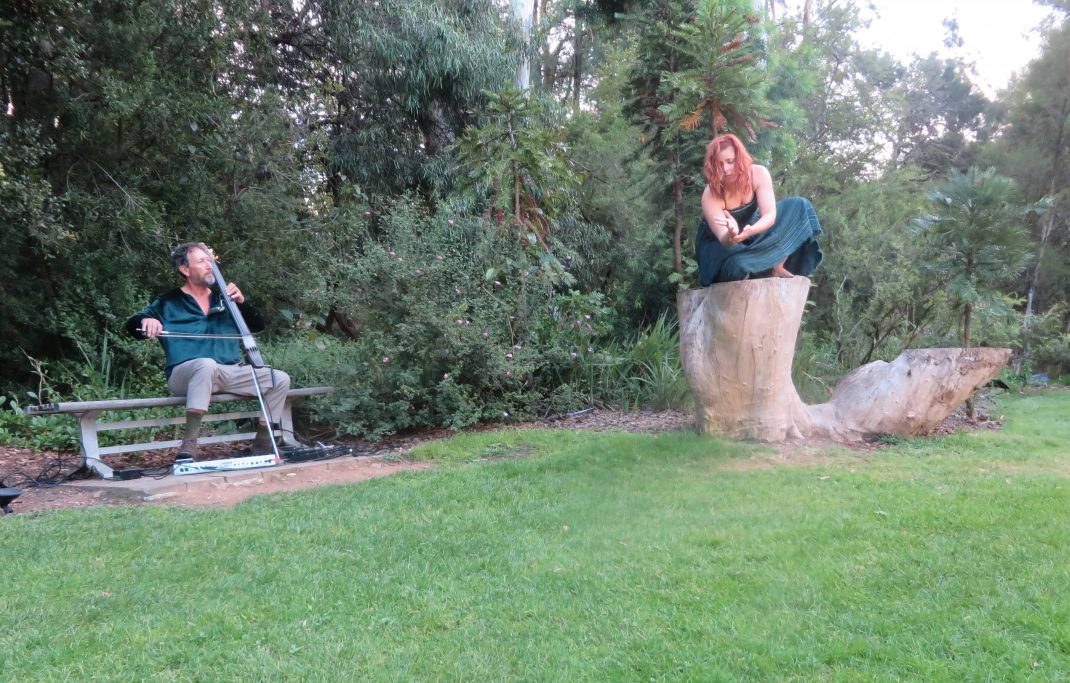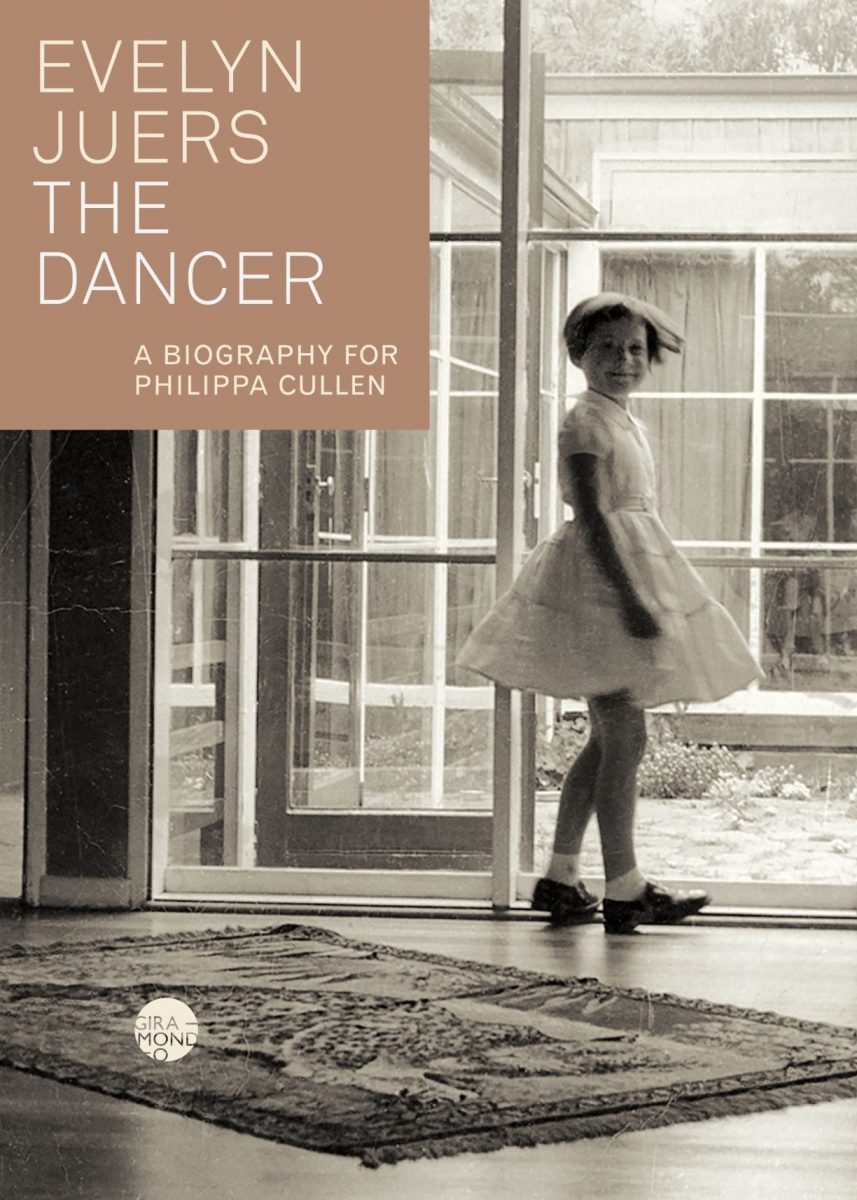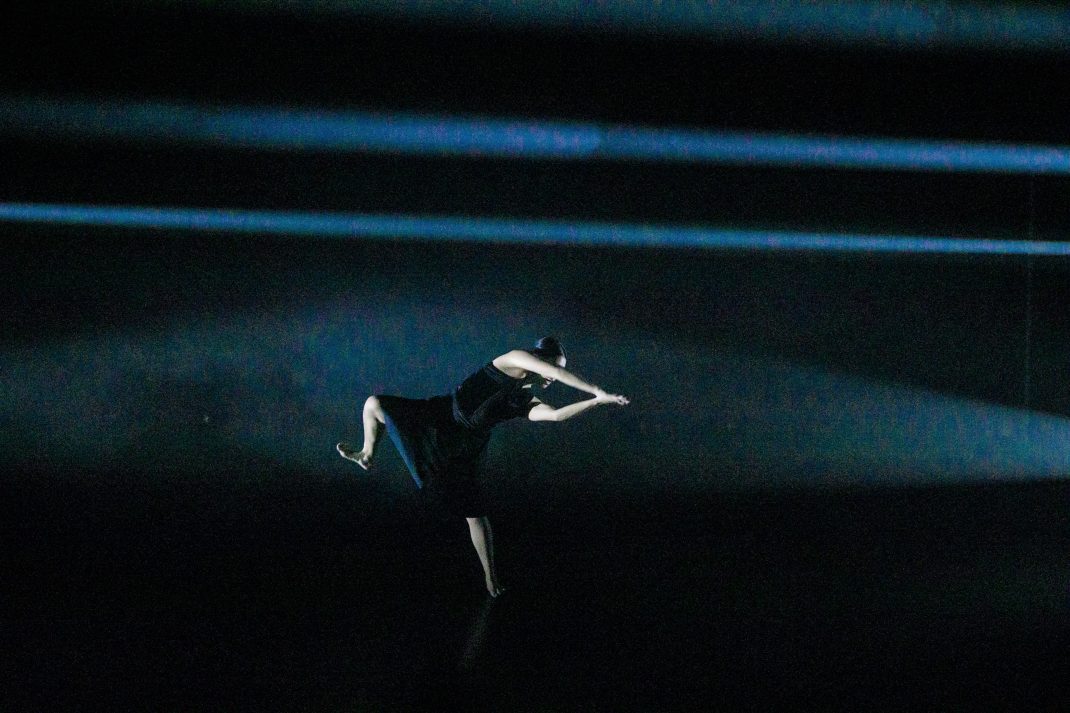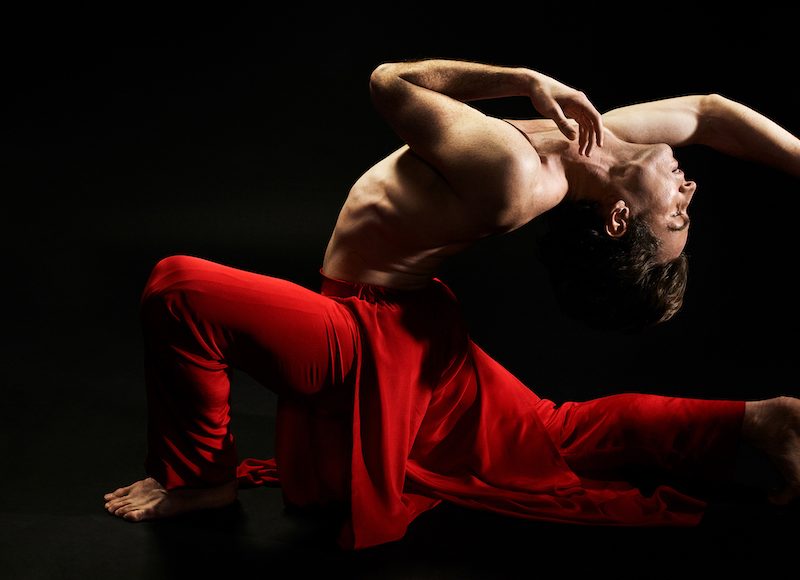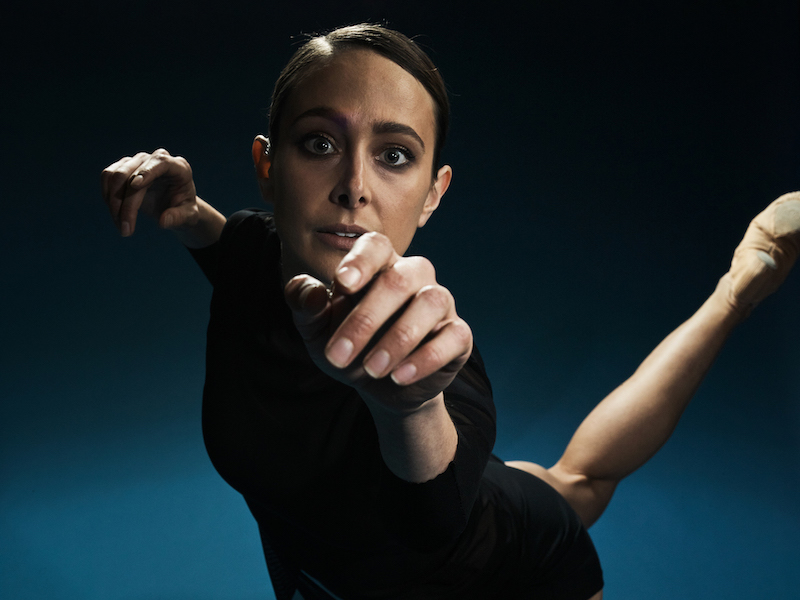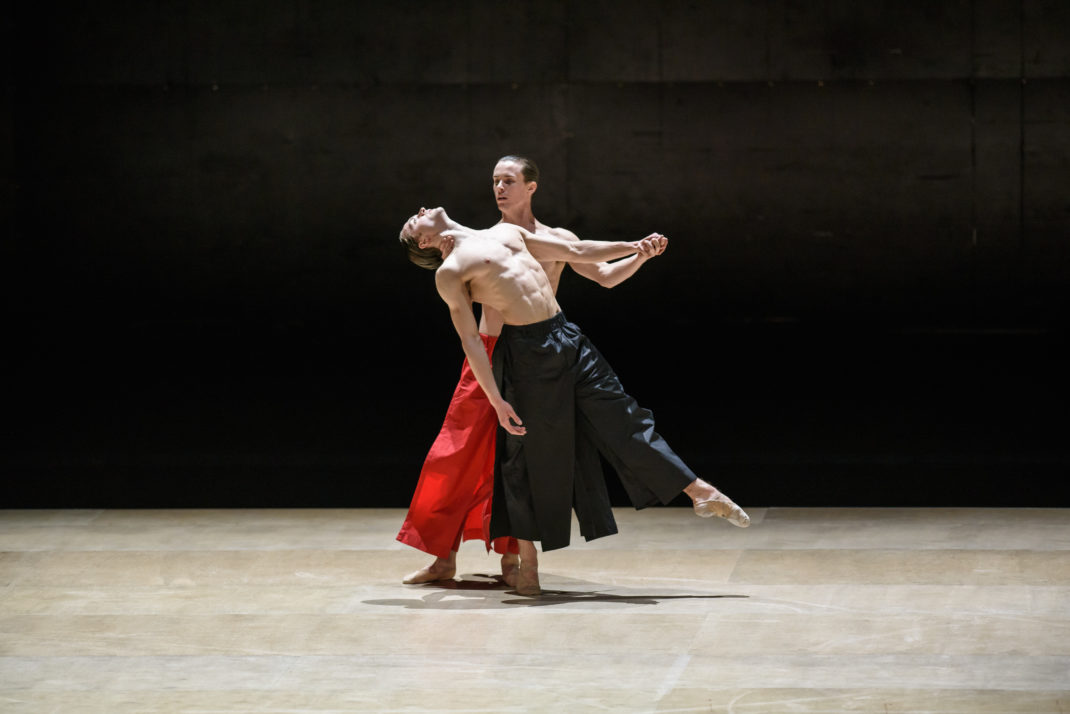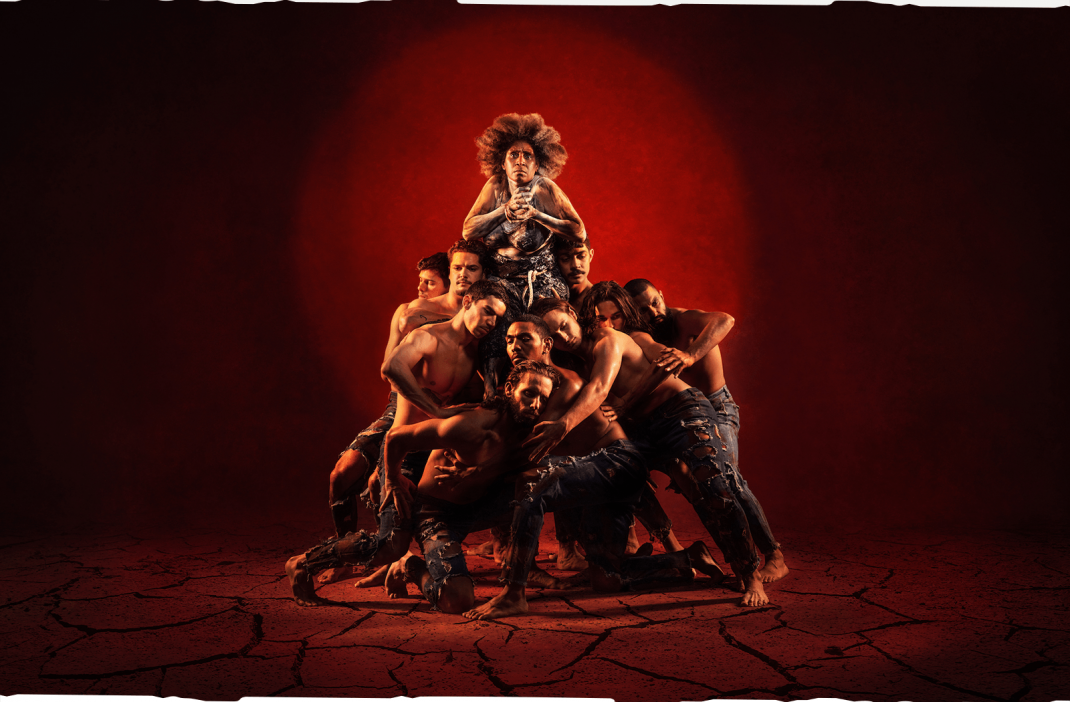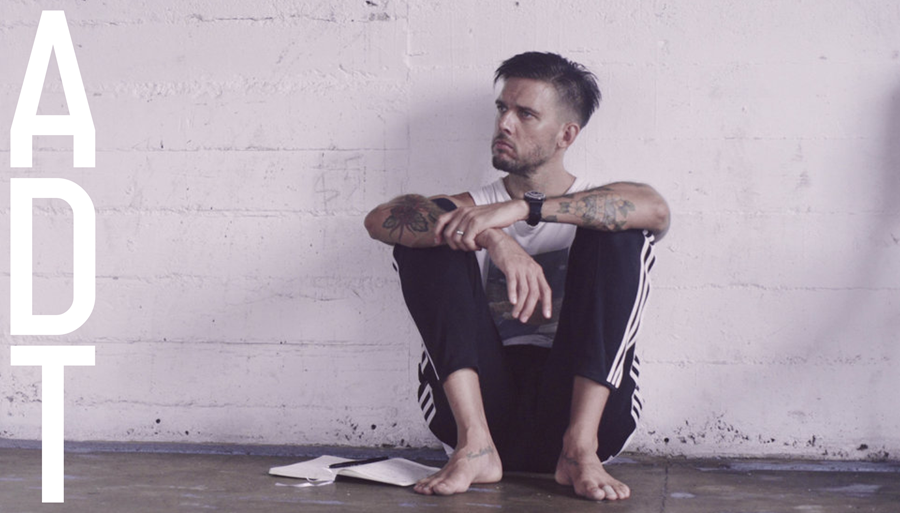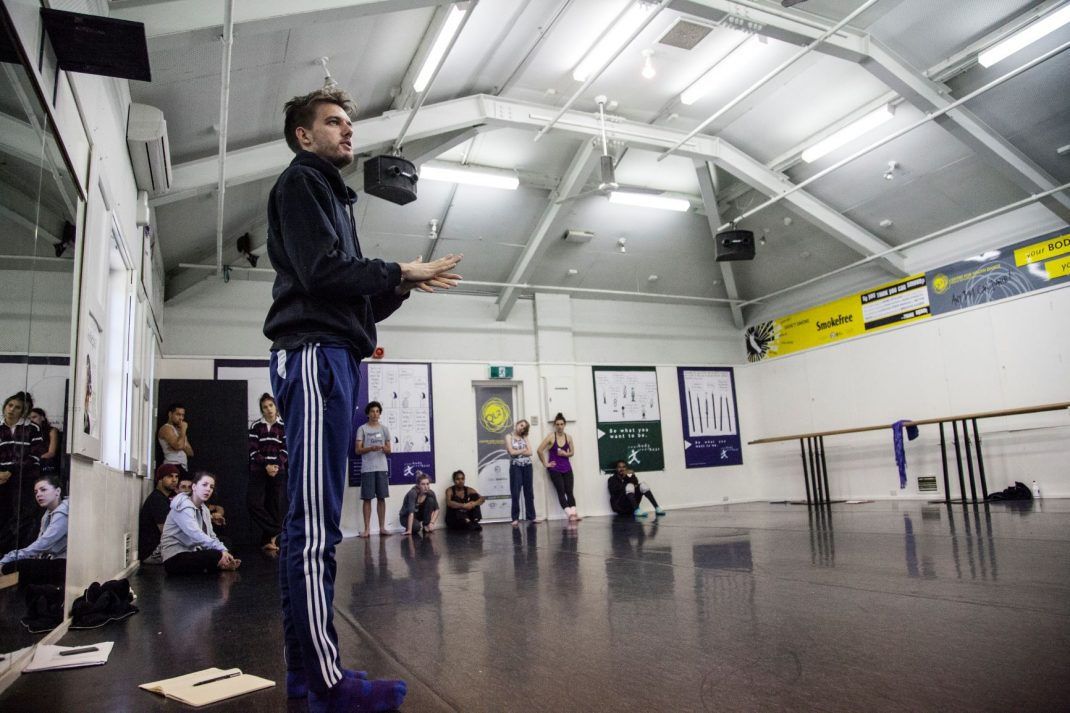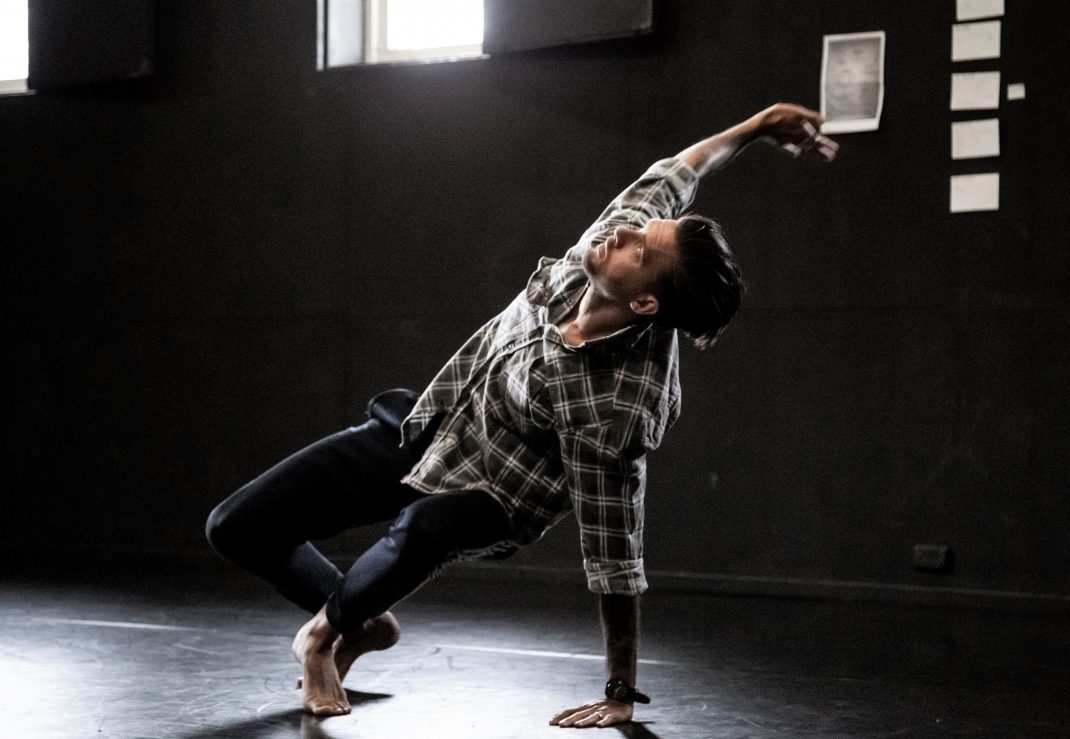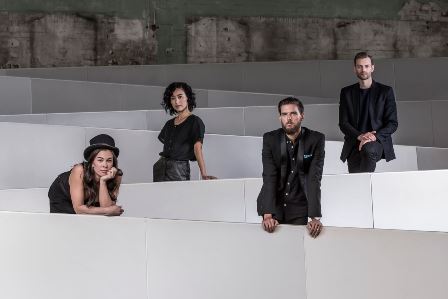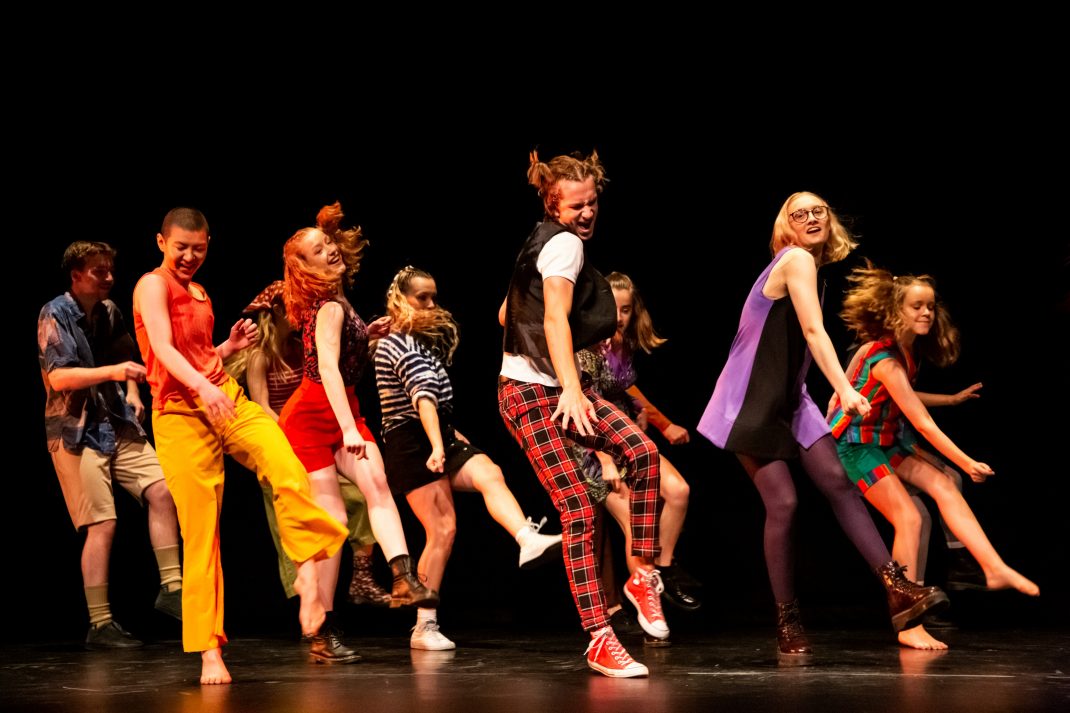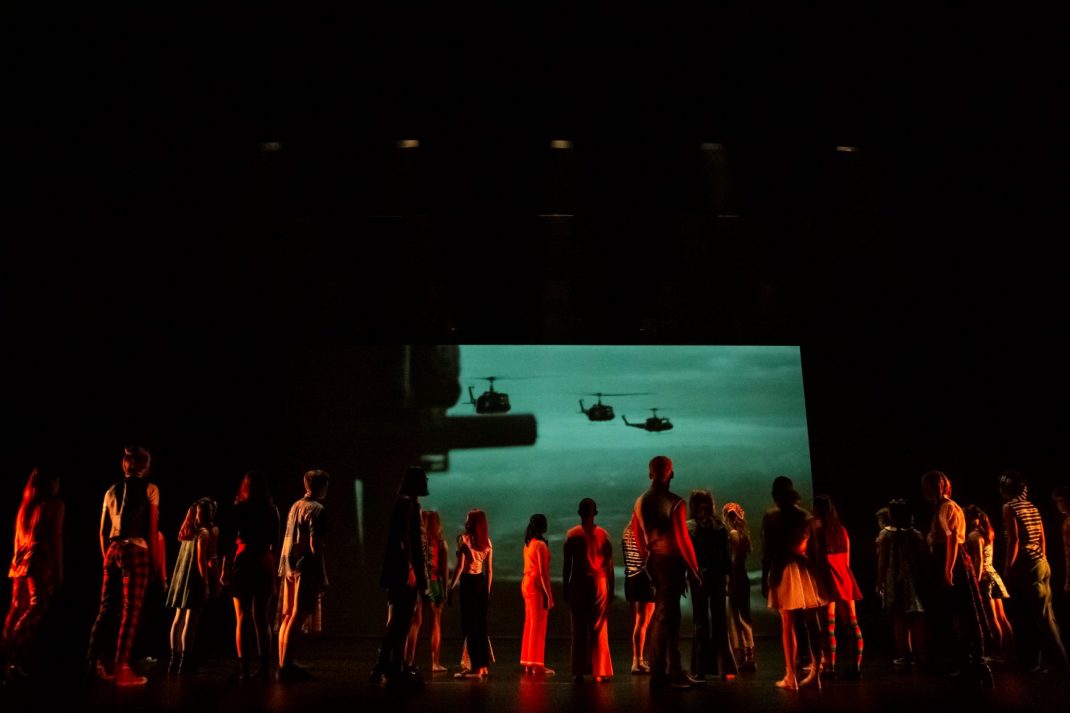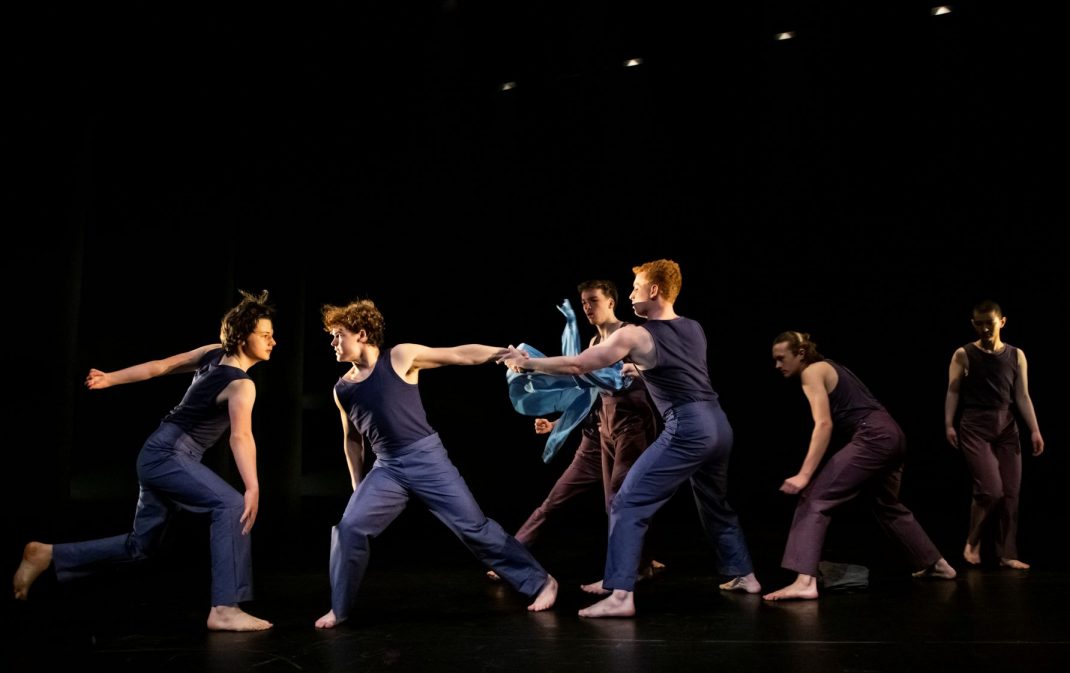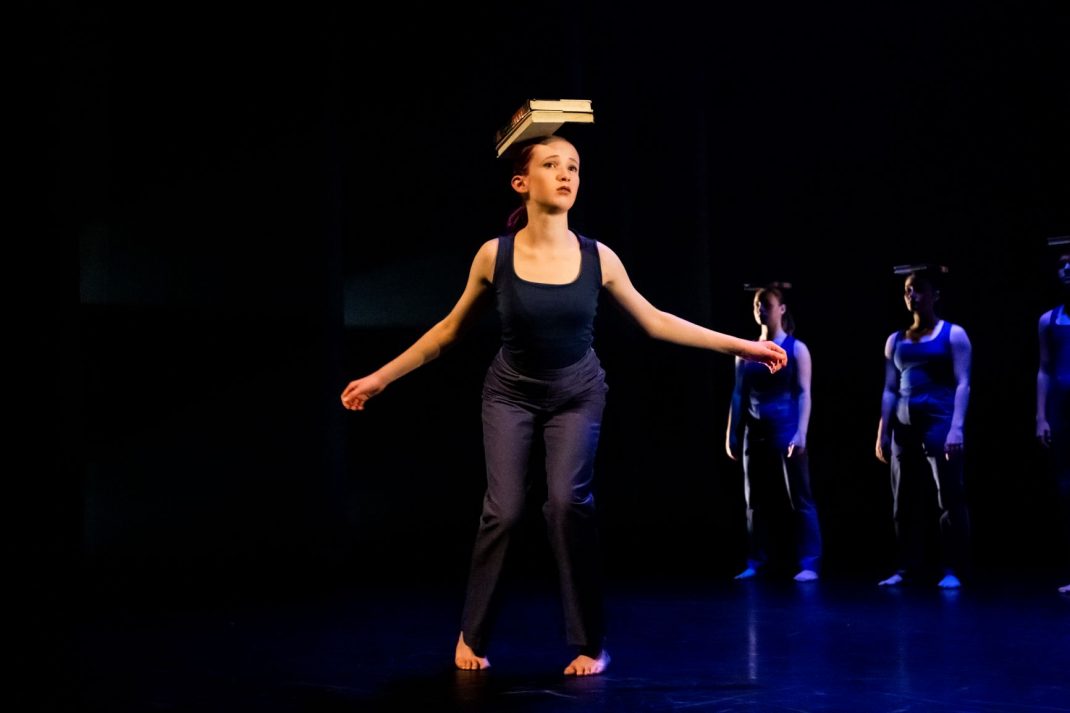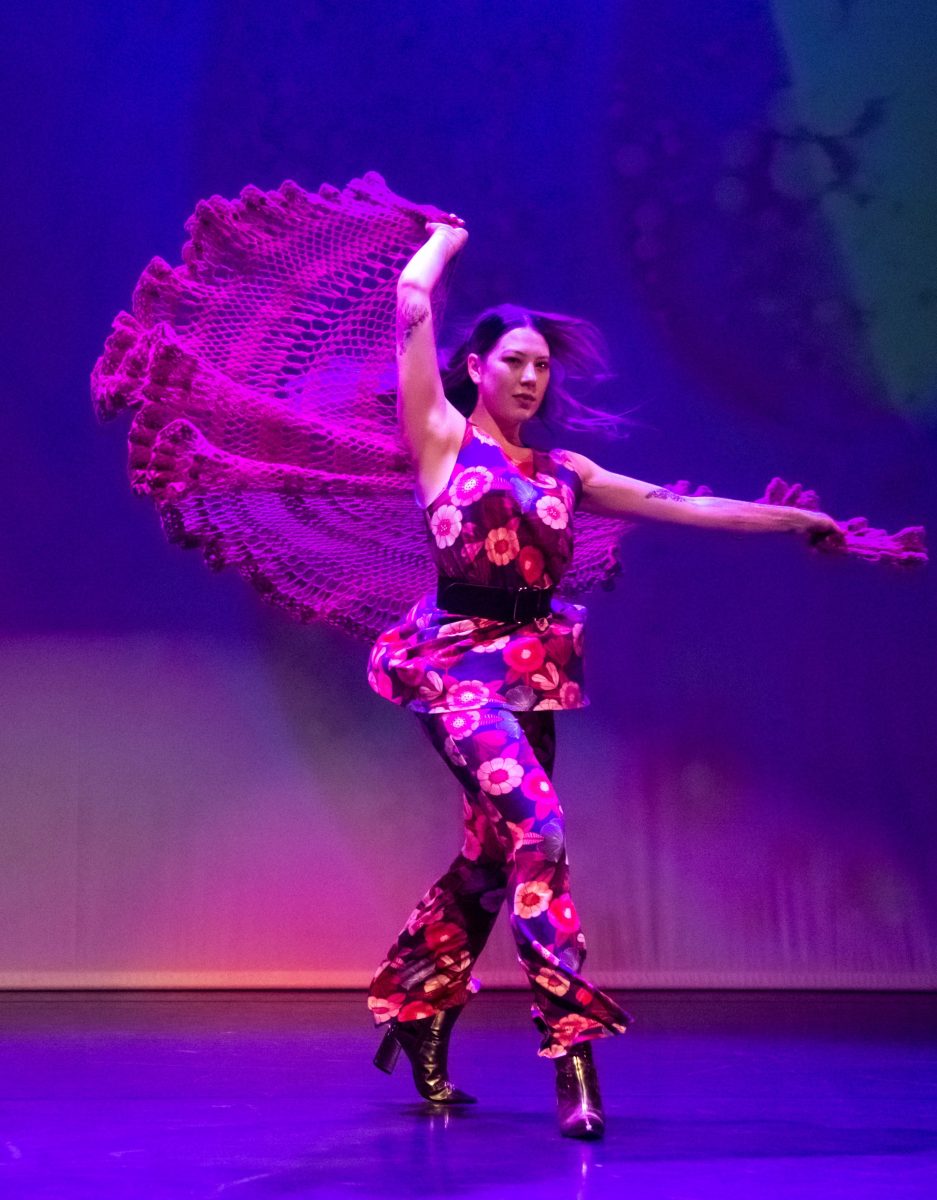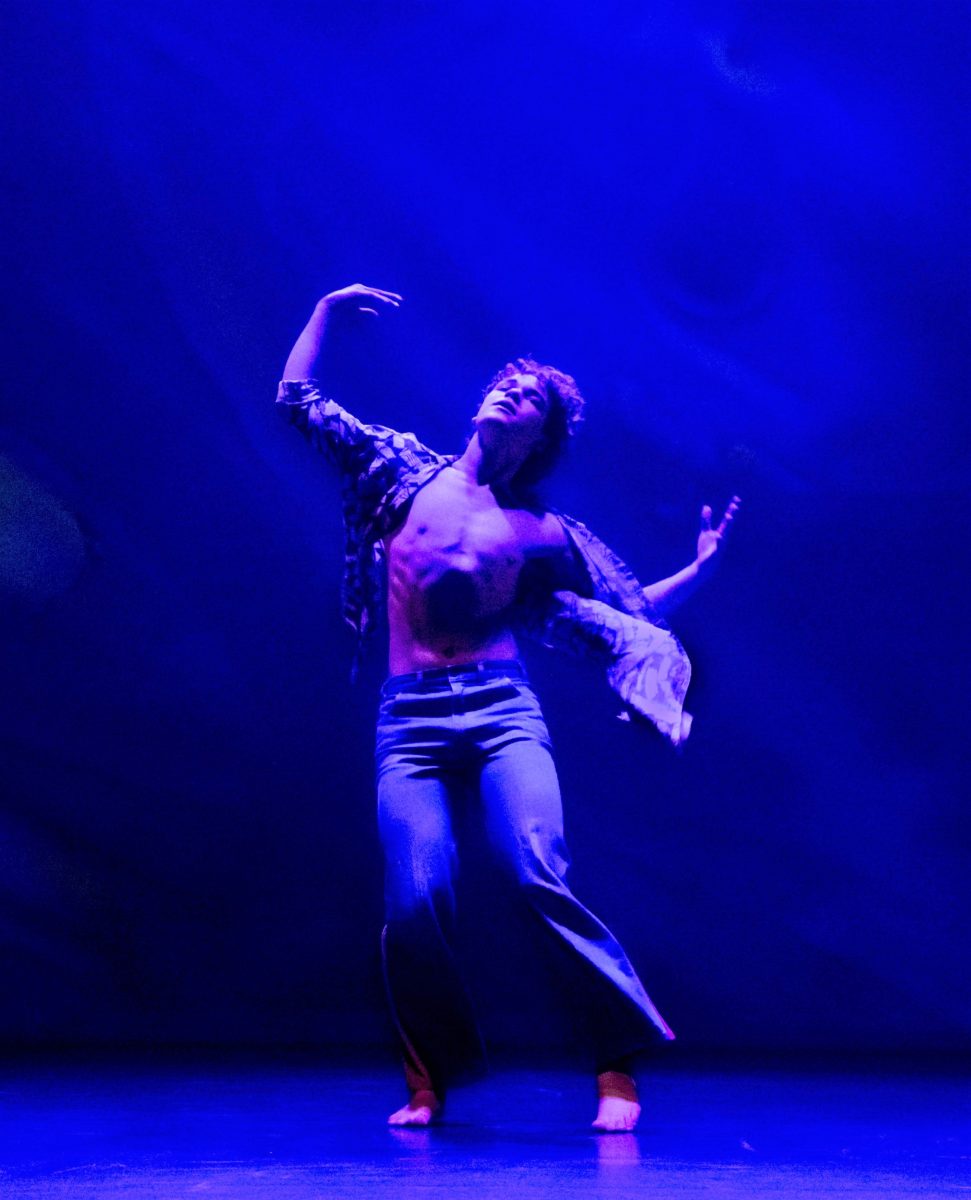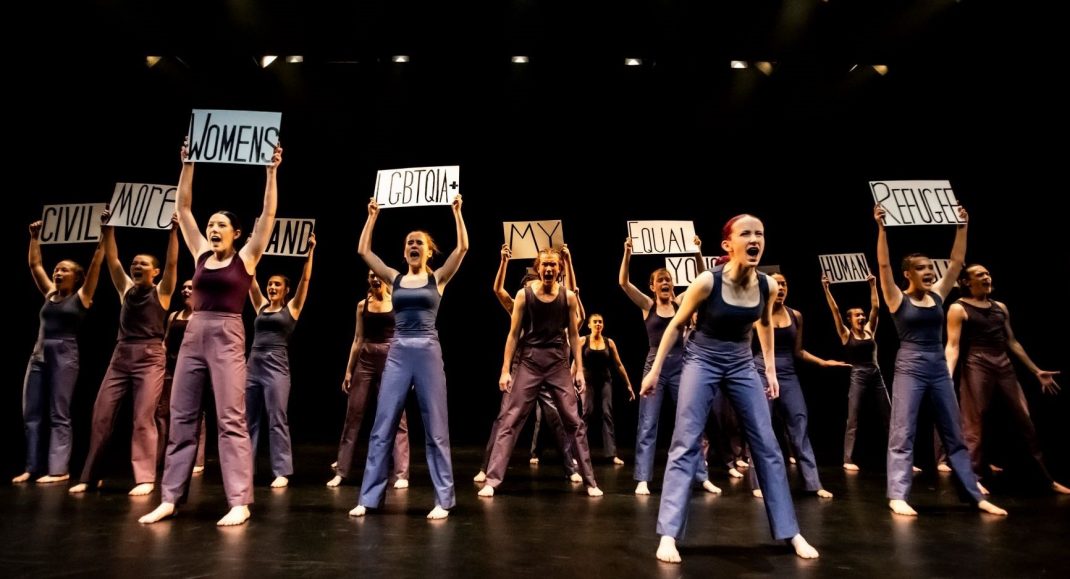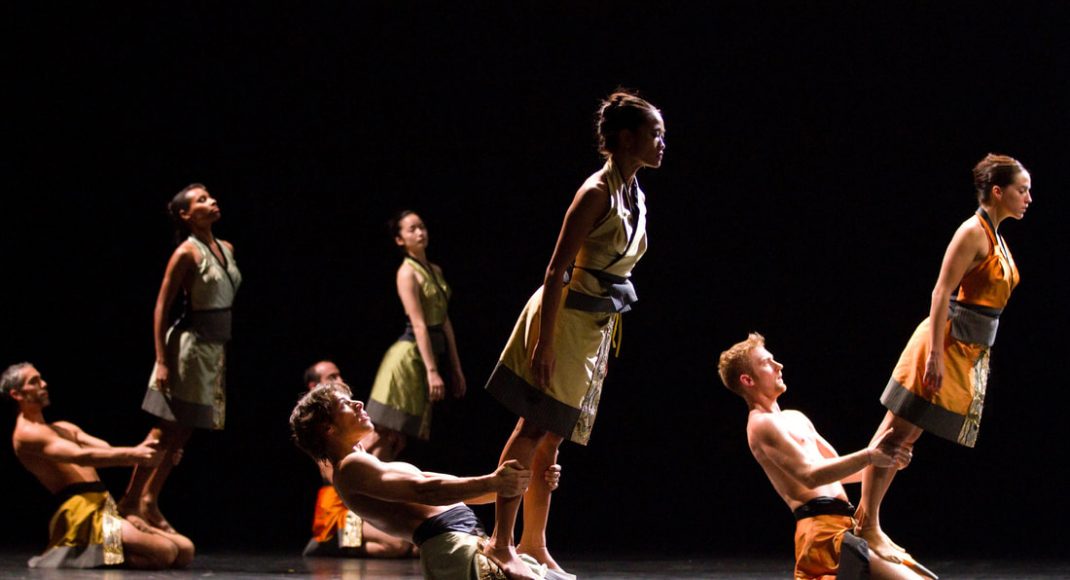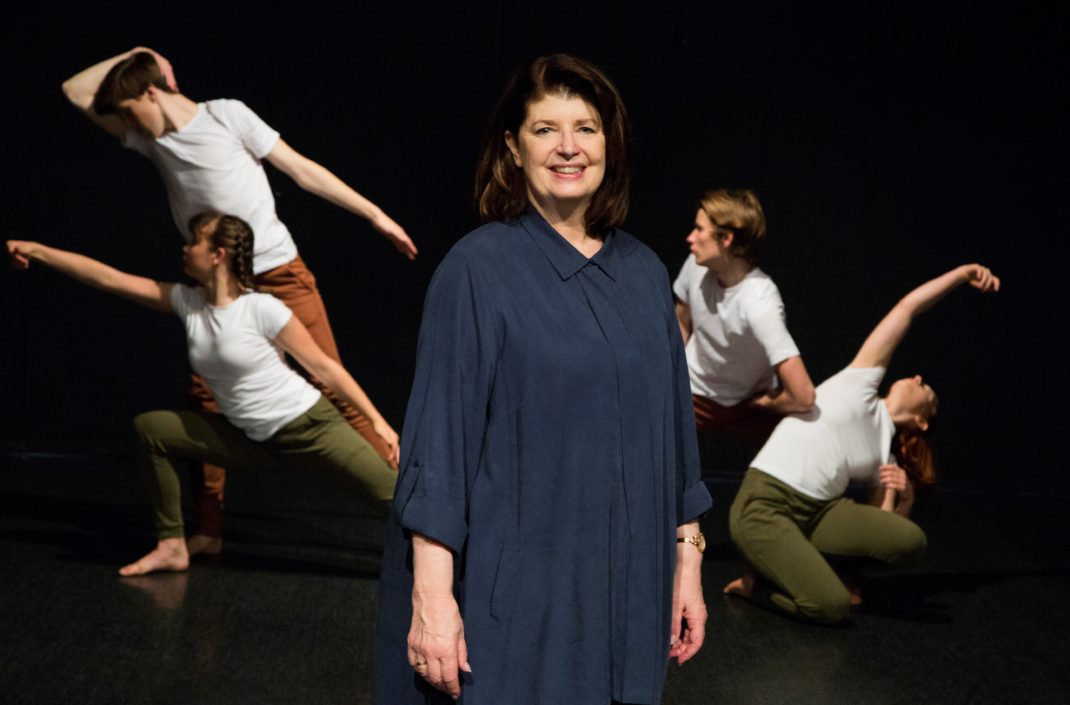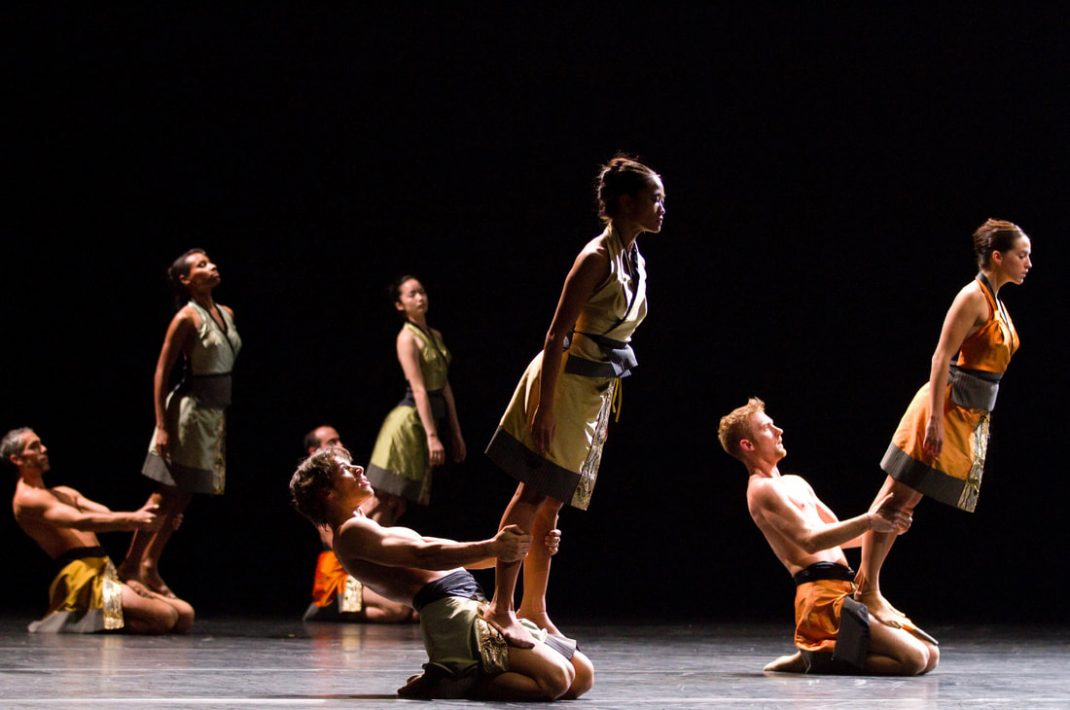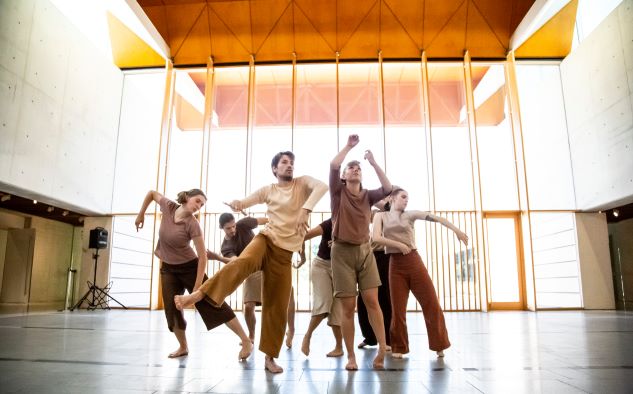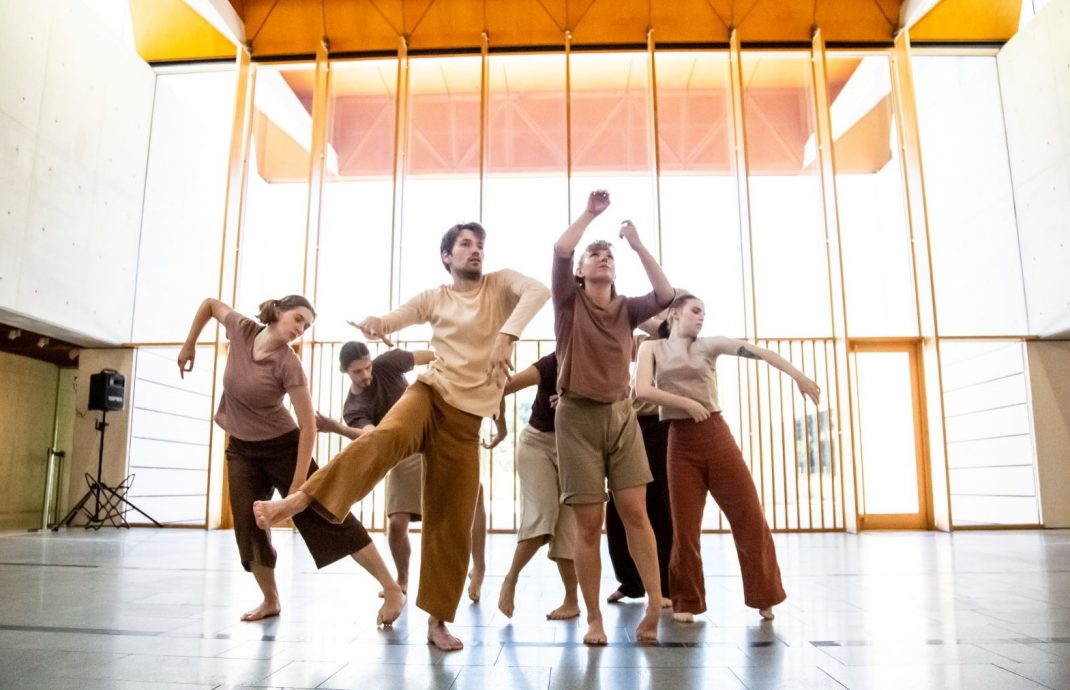26 May 2022. The Playhouse, Canberra Theatre Centre
The constant in productions staged by QL2 for Quantum Leap, the organisation’s auditioned youth dance ensemble for ages 14-26, is the way the dancers are choreographed into groupings. The nature of the groupings varies of course from choreographer to choreographer and work to work, but we can always see groups forming and breaking apart, changing in position on the stage, closing up into tight groupings, spreading apart and joining together with outstretched arms, building up a grouping with one dancer standing on another, and any number of variations on these choreographic ideas. In many respects, that the choreography is based on changing group structures is a result of the fact that Quantum Leap is not an ensemble that features particular dancers over others, or not usually. It is a group featuring everyone.
Of the three works shown as part of Terra Firma, Quantum Leap’s most recent triple bill, it was Melanie Lane’s work Metal Park that used group structures in the most engaging way. Metal Park focused on potential relationships between the human body and objects of various kinds. As the work began, we noticed large black objects in various spots on the stage, which were carried off but eventually brought back and opened up to display a variety of static objects in various shapes and colours. Throughout the work the dancers interacted with these and other objects, which included long poles that were arranged in different combinations on the stage floor. Sometimes dancers were treated as objects and were carried across the stage by other dancers.
But, to the group structures: what was most engaging was the way Lane gave groups of dancers a movement structure as well as a static one. Supported by a sound score from Christopher Clark, there were moments when the dancers moved in unison with beautifully rehearsed, often small but distinct movements of the feet, hands and upper body. It was almost militaristic in detail and performance, but was also engaging to watch.
Perhaps overall the work was just a little too long—perhaps the section with the poles and the floor design created with them could have been a little shorter. But Lane’s choreography continues to be something to keep watching as she continues her already admirable career.
Metal Park was followed by Shifting Ground from Cadi McCarthy. It focused on navigating the changing nature of the world, whether seen globally or in a more personal manner, and the cast included some dancers from Flipside Project, a youth group from Newcastle directed by McCarthy. The most obvious feature coming through the work, at least for me, was that personal relationships are sometimes difficult, which was clear not so much through choreography but through facial expressions.
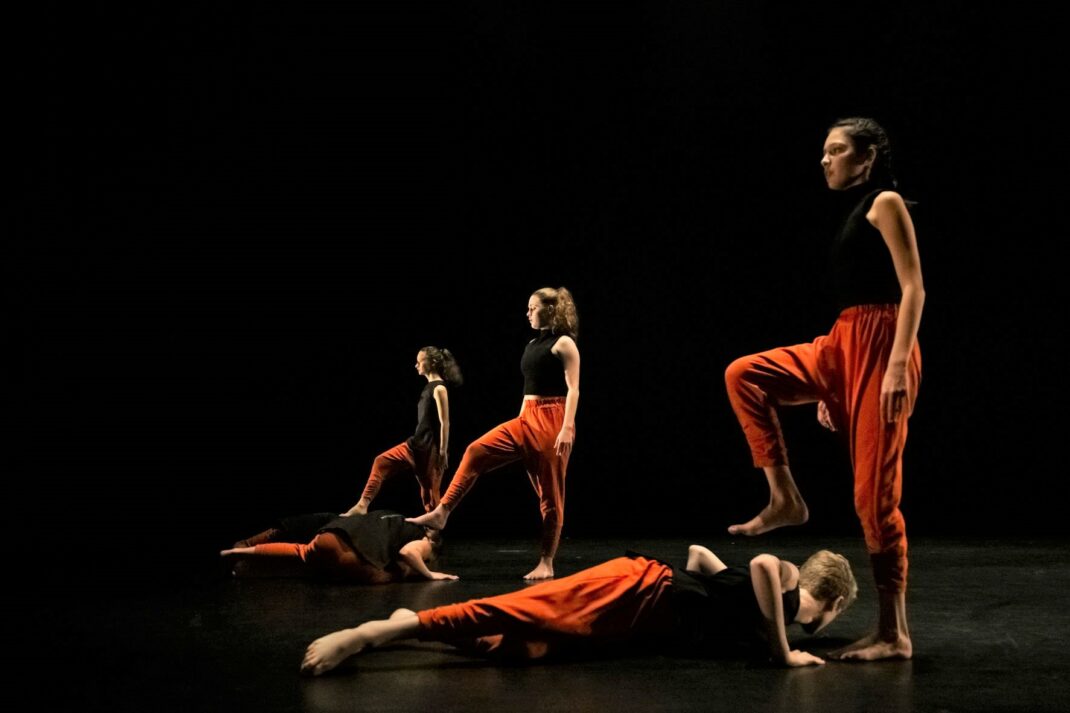
The evening closed with Tides of Time by Synergy Styles (Stephen and Lilah Gow), which set out to examine ‘temporal orientation’ and the ideas of time present, past and future. It began in a mesmerising fashion as filmed clips (created by Wildbear Digital) played across the stage space. They showed dancers, seen in a variety of poses, gliding through space as if extracted from reality. The work then moved on to live performance against a background of watery images, which provided a captivating environment for the choreography.
I felt, as I often do with Quantum Leap productions, that the themes were easily explained in words and the social and political implications were strong and contemporary. But those themes and their implications were not always expressed well in a choreographic sense. I continue to wonder what Quantum Leap’s shows would be like without such highly detailed and theoretical scenarios. Dance can convey the deepest of meanings but the meaning has to come from the choreography, which doesn’t always happen with Quantum Leap productions.
Terra Firma was, however, beautifully produced and dressed (costumes by Cate Clelland) and the standard of performance by the dancers was outstanding. And the manner in which Quantum Leap manages its curtain calls continues to be exceptional!
Michelle Potter, 29 May 2022
Featured image: Scene from Metal Park. Photo: © Lorna Sim
